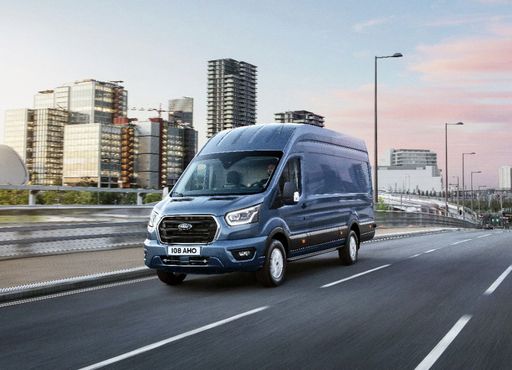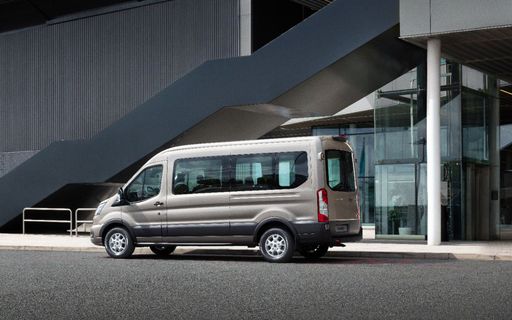Ford Transit Transporter vs Renault Trafic Bus - Differences and prices compared
Costs and Efficiency:
Looking at overall running costs, both models reveal some interesting differences in everyday economy.
Renault Trafic Bus has a barely noticeable advantage in terms of price – it starts at 38200 £, while the Ford Transit Transporter costs 39900 £. That’s a price difference of around 1694 £.
Fuel consumption also shows a difference: Renault Trafic Bus manages with 6.70 L and is therefore somewhat more efficient than the Ford Transit Transporter with 7.90 L. The difference is about 1.20 L per 100 km.
Engine and Performance:
Power, torque and acceleration say a lot about how a car feels on the road. This is where you see which model delivers more driving dynamics.
When it comes to engine power, the Ford Transit Transporter has a evident edge – offering 269 HP compared to 170 HP. That’s roughly 99 HP more horsepower.
In terms of top speed, the Renault Trafic Bus performs distinct better – reaching 180 km/h, while the Ford Transit Transporter tops out at 120 km/h. The difference is around 60 km/h.
There’s also a difference in torque: Ford Transit Transporter pulls to a small extent stronger with 430 Nm compared to 380 Nm. That’s about 50 Nm difference.
Space and Everyday Use:
Beyond pure performance, interior space and usability matter most in daily life. This is where you see which car is more practical and versatile.
Seats: Renault Trafic Bus offers noticeable more seating capacity – 9 vs 6.
In curb weight, Renault Trafic Bus is barely noticeable lighter – 2031 kg compared to 2074 kg. The difference is around 43 kg.
In maximum load capacity, the Ford Transit Transporter performs convincingly better – up to 14100 L, which is about 10100 L more than the Renault Trafic Bus.
When it comes to payload, Ford Transit Transporter convincingly takes the win – 2607 kg compared to 982 kg. That’s a difference of about 1625 kg.
Who comes out on top?
Overall, the Ford Transit Transporter shows itself to be dominates this comparison and secures the title of DriveDuel Champion.
It convinces with the more balanced overall package and proves to be the more versatile choice for everyday use.
 @ Ford Motor Company / Ford Media Center
@ Ford Motor Company / Ford Media Center
Ford Transit Transporter
Costs and Consumption
View detailed analysis
Engine and Performance
View detailed analysis
Dimensions and Body
View detailed analysis
Ford Transit Transporter
The Ford Transit is the no-nonsense workhorse that turns heavy-duty hauling into a surprisingly civilized experience, with a cabin that favors practicality over pretense. It’s the go-to for tradespeople and fleet managers who want reliability, adaptability and low running headaches — not showy gimmicks.
details @ Ford Motor Company / Ford Media Center
@ Ford Motor Company / Ford Media Center
 @ Ford Motor Company / Ford Media Center
@ Ford Motor Company / Ford Media Center
 @ Ford Motor Company / Ford Media Center
@ Ford Motor Company / Ford Media Center
Renault Trafic Bus
The Renault Trafic is a practical people-carrier that prefers sensible space and smart flexibility to showroom gloss, making it a top pick for families, shuttle operators or anyone ferrying a crowd without fuss. It’s comfortable, economical in everyday running and blessedly uncomplicated — not the most glamorous vehicle, but brilliantly dependable when you need it to be.
details
 @ Ford Motor Company / Ford Media Center
@ Ford Motor Company / Ford Media Center
|
|
|
|
|
Costs and Consumption |
|
|---|---|
|
Price
39900 - 69100 £
|
Price
38200 - 54400 £
|
|
Consumption L/100km
7.9 - 10.3 L
|
Consumption L/100km
6.7 - 7.2 L
|
|
Consumption kWh/100km
21.3 - 32 kWh
|
Consumption kWh/100km
-
|
|
Electric Range
247 - 317 km
|
Electric Range
-
|
|
Battery Capacity
68 kWh
|
Battery Capacity
-
|
|
co2
0 - 270 g/km
|
co2
175 - 189 g/km
|
|
Fuel tank capacity
70 L
|
Fuel tank capacity
80 L
|
Dimensions and Body |
|
|---|---|
|
Body Type
Cargo Van
|
Body Type
Bus
|
|
Seats
3 - 6
|
Seats
8 - 9
|
|
Doors
4
|
Doors
4
|
|
Curb weight
2074 - 2765 kg
|
Curb weight
2031 - 2352 kg
|
|
Trunk capacity
-
|
Trunk capacity
-
|
|
Length
5531 - 6704 mm
|
Length
5080 - 5480 mm
|
|
Width
2059 mm
|
Width
1956 mm
|
|
Height
2530 - 2778 mm
|
Height
1973 - 1974 mm
|
|
Max trunk capacity
9300 - 14100 L
|
Max trunk capacity
3200 - 4000 L
|
|
Payload
735 - 2607 kg
|
Payload
718 - 982 kg
|
Engine and Performance |
|
|---|---|
|
Engine Type
Diesel, Electric
|
Engine Type
Diesel
|
|
Transmission
Manuel, Automatic
|
Transmission
Manuel, Automatic
|
|
Transmission Detail
Manual Gearbox, Automatic Gearbox, Reduction Gearbox
|
Transmission Detail
Manual Gearbox, Automatic Gearbox
|
|
Drive Type
Front-Wheel Drive, Rear-Wheel Drive, All-Wheel Drive
|
Drive Type
Front-Wheel Drive
|
|
Power HP
105 - 269 HP
|
Power HP
110 - 170 HP
|
|
Acceleration 0-100km/h
-
|
Acceleration 0-100km/h
10.6 - 16.5 s
|
|
Max Speed
120 km/h
|
Max Speed
161 - 180 km/h
|
|
Torque
310 - 430 Nm
|
Torque
300 - 380 Nm
|
|
Number of Cylinders
4
|
Number of Cylinders
4
|
|
Power kW
77 - 198 kW
|
Power kW
81 - 125 kW
|
|
Engine capacity
1996 cm3
|
Engine capacity
1997 cm3
|
General |
|
|---|---|
|
Model Year
2019 - 2024
|
Model Year
2023 - 2025
|
|
CO2 Efficiency Class
G, A
|
CO2 Efficiency Class
G, F
|
|
Brand
Ford
|
Brand
Renault
|
What drivetrain options does the Ford Transit Transporter have?
Available configurations include Front-Wheel Drive, Rear-Wheel Drive or All-Wheel Drive.
The prices and data displayed are estimates based on German list prices and may vary by country. This information is not legally binding.
